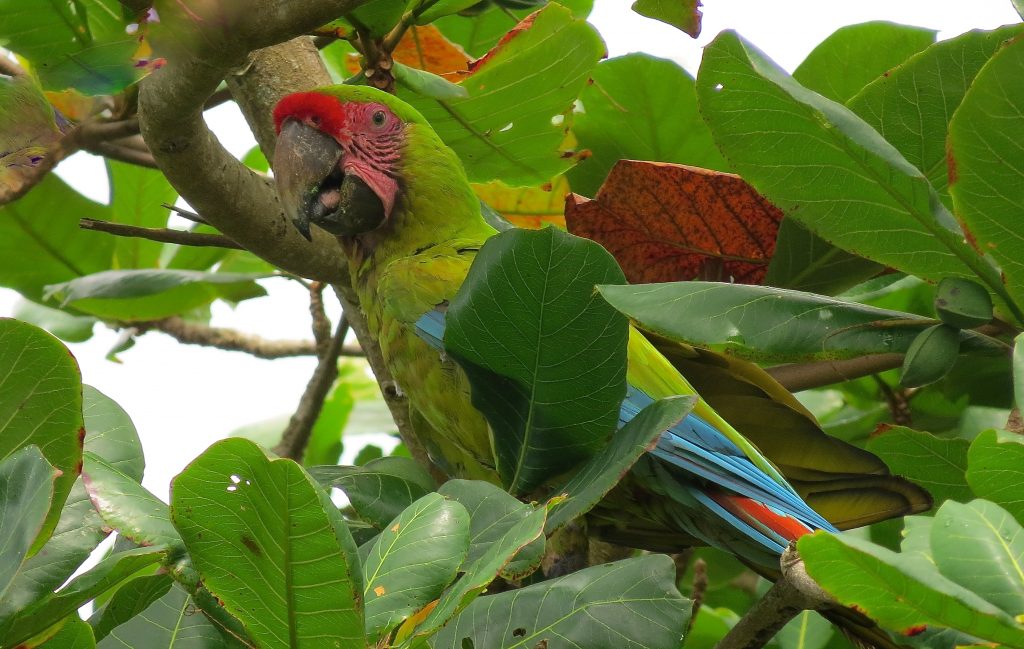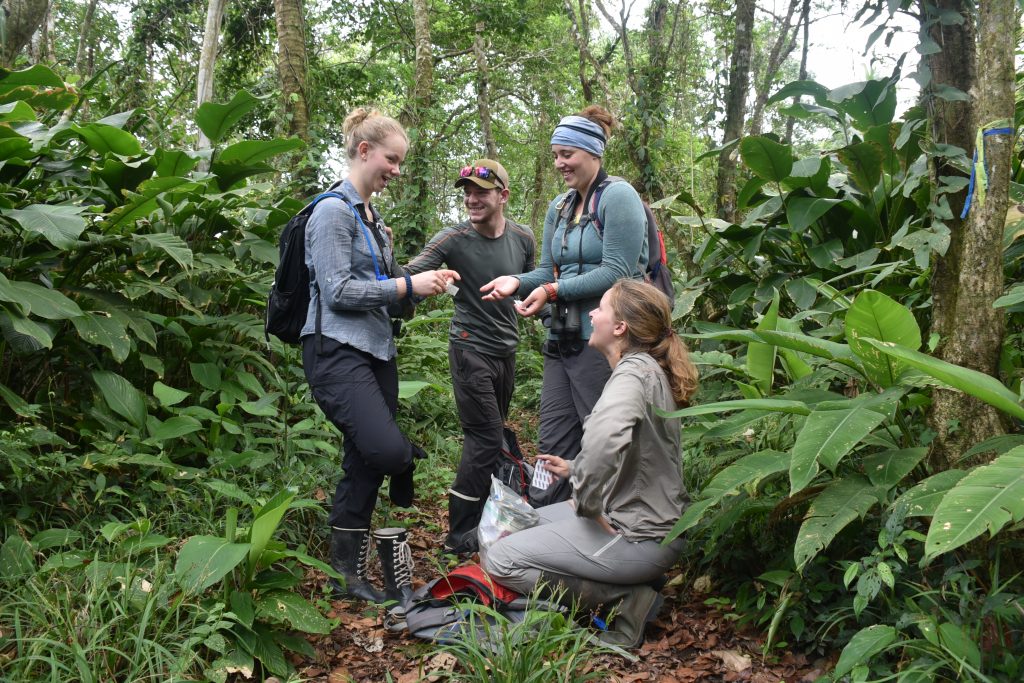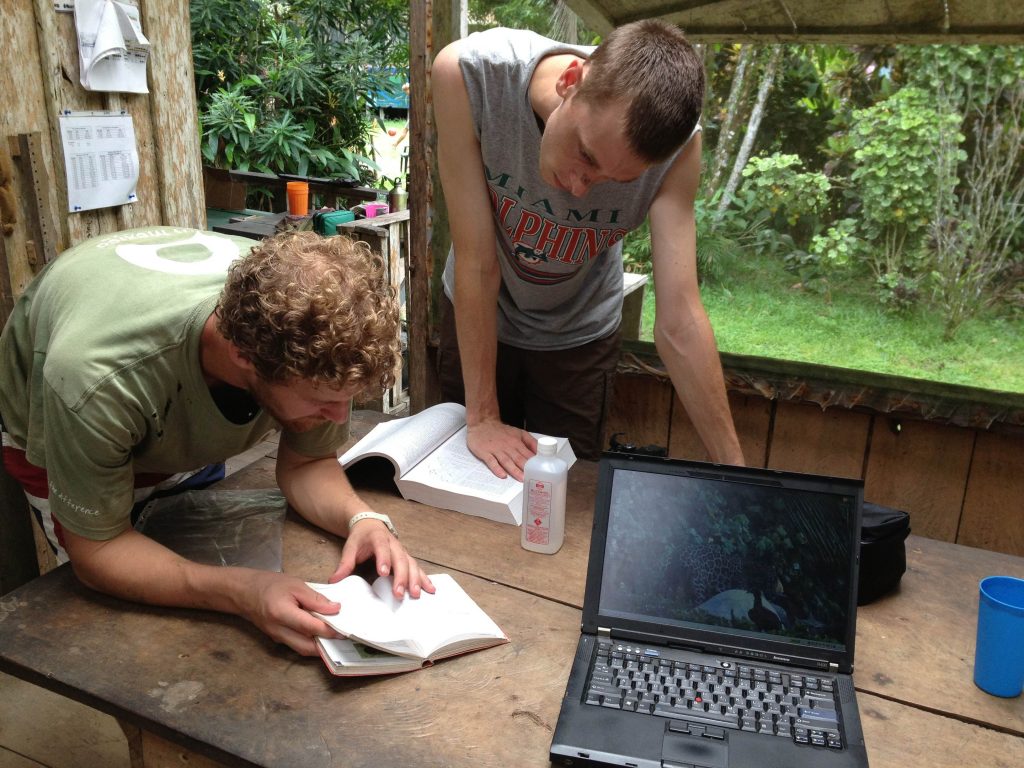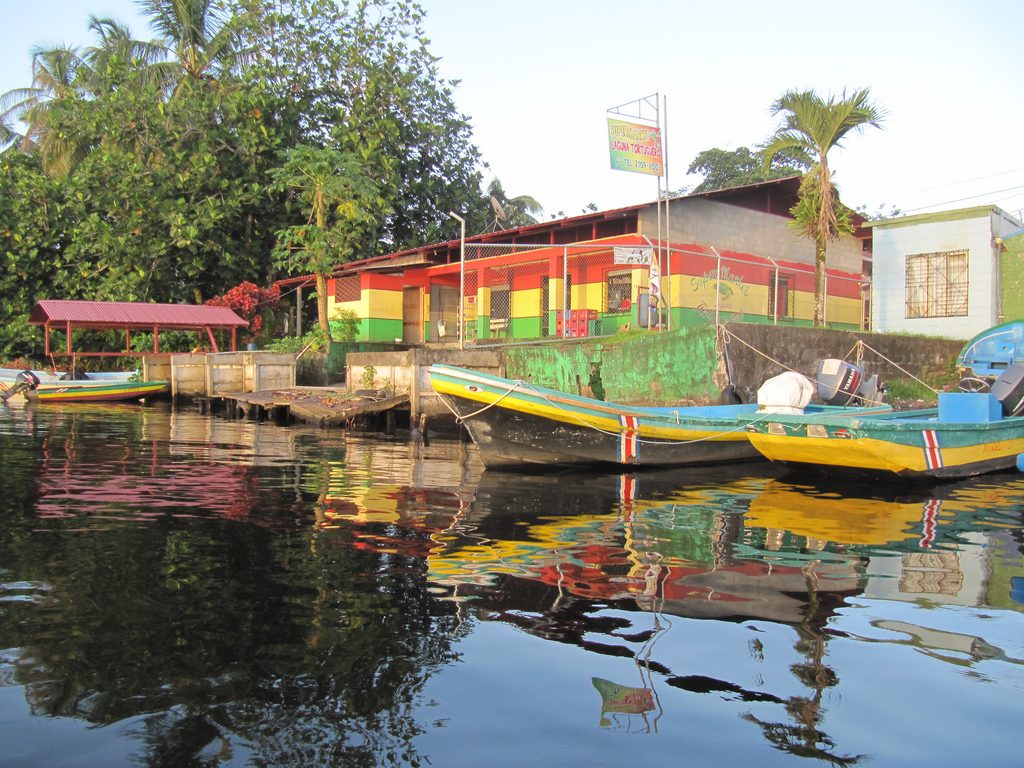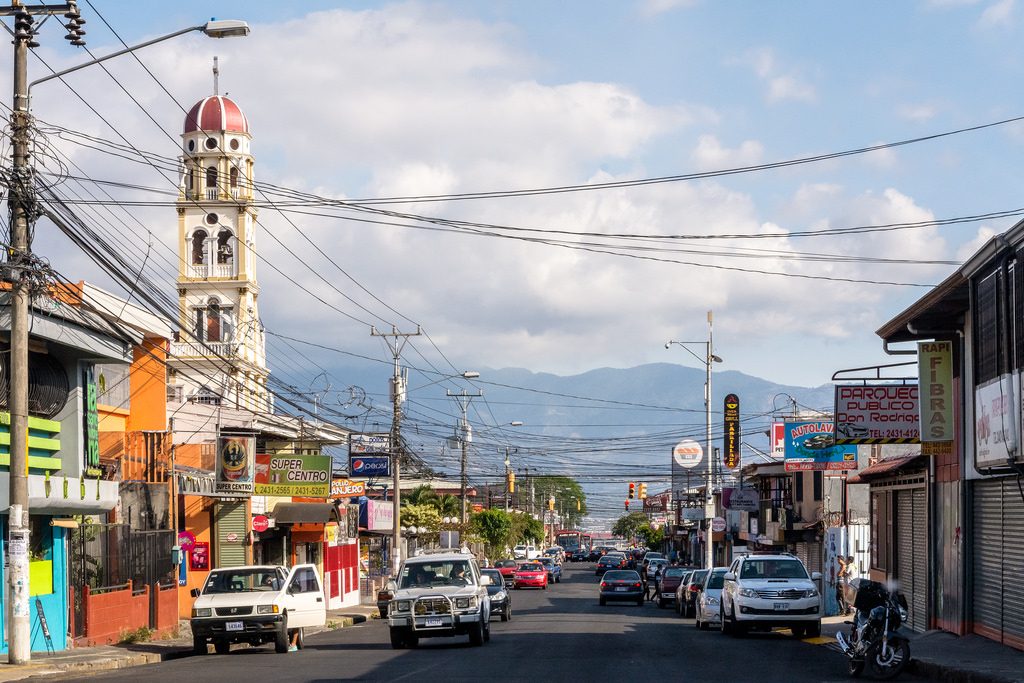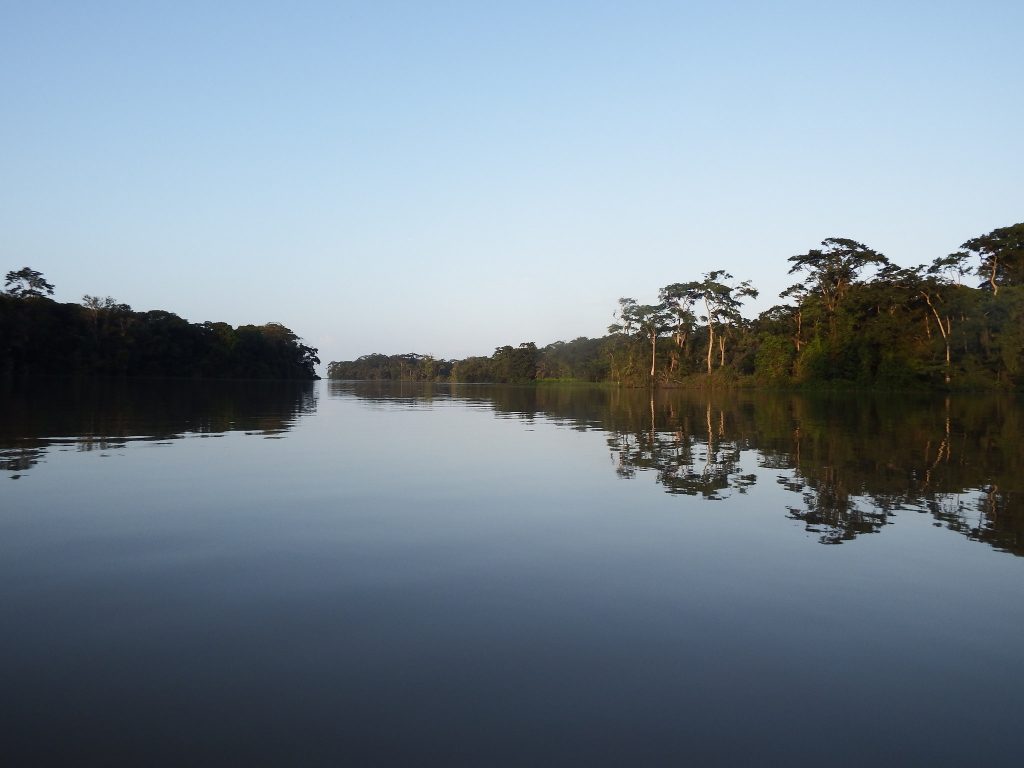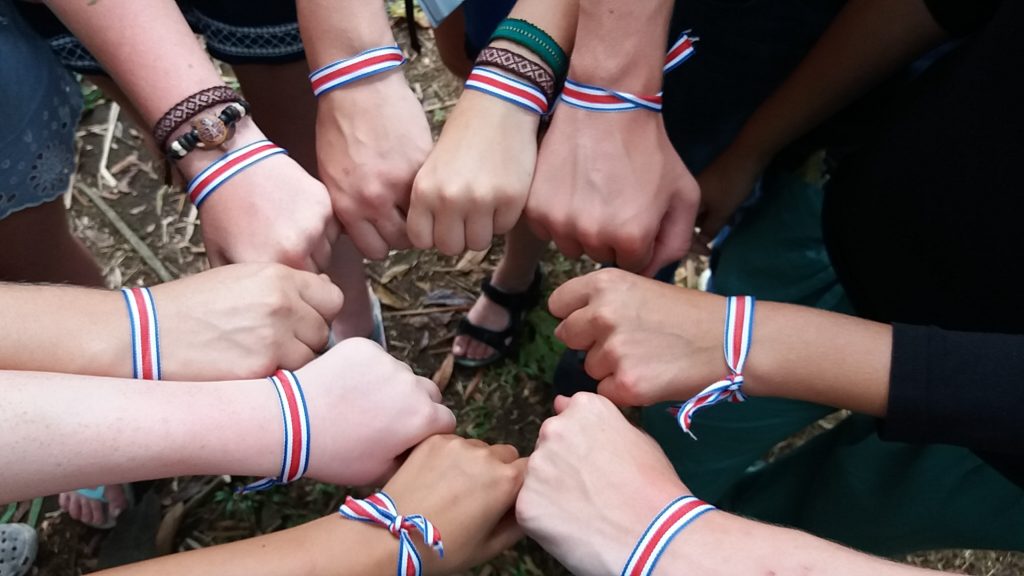Bird Research in Costa Rica
- Experiences | Vol and Intern
-
Conservation Careers
- Jalova, Costa Rica
- Posted
3 weeks ago
-
Conservation Careers
Bird Research in Costa Rica
- Experiences | Vol and Intern
-
Conservation Careers
- Jalova, Costa Rica
- Posted
3 weeks ago
-
Conservation Careers
Overview
Assist in the protection and study of both aquatic and forest birds, whilst living and working in a Costa Rican rainforest AND get career training from Conservation Careers!
Discover the tropical habitat of Costa Rica while learning about and helping to preserve the diverse bird species in the region. Stand atop the hawk tower, the highest point in the Kekoldi Indigenous Reserve, and trek through jungle paths in search of birds. Data collected will inform long-term conservation efforts along Costa Rica’s Caribbean coast.
Overview
Work with GVI staff and participants from all over the world worldwide to assist specialists in collecting data on forest bird species throughout the Kekoldi Indigenous Reserve. Live at the heart of a large project monitoring population levels of 20 species of migratory birds of prey. This data is valuable not only for understanding the population dynamics of these remarkable birds but also for examining how climate change affects their behaviour.
Learn to identify these species in the wild, note their sex and breeding behaviour, and input the information into relevant databases. This data is used for writing scientific papers, and migratory research findings are shared on open-source platforms for broader global research.
While bird surveys will be the primary focus of your project, you may also have the opportunity to participate in additional research projects, gaining a holistic understanding of the Costa Rican environment. These projects might involve monitoring camera traps for evidence of wild cats in the vicinity, or conducting surveys of the mammals, reptiles, and amphibians found along several trails in the surrounding forest environment.
Through recording, processing and analysing data, you’ll grasp the technical aspects of real-world conservation research, enhancing your ability to operate professionally in this field. Additionally, you’ll master soft skills like teamwork, beneficial for excelling in various professions. The experience of living and working on a small base with a tightly-knit group of participants is designed to help you form lifelong bonds with others who share your fascination for birds and wildlife.
Highlights
- Contribute to bird research. Work on dedicated raptor and tropical bird species research, gaining invaluable experience in data collection techniques and conservation strategies.
- Feel the rush of the jungle. Live in a protected indigenous reserve, surrounded by abundant wildlife species like jungle cats, monkeys, tropical birds, birds of prey and reptiles.
- Be part of the real deal. Contribute to ongoing environmental projects that address critical challenges aligned to the global United Nations Sustainable Development Goals.
- Join ethical initiatives. Join local conservation partners and qualified professionals to ensure your efforts are highly ethical, meaningful and sustainable.
- Experience unreal adventures. Venture outside typical travel itineraries to get exclusive access to extraordinary remote habitats, rare species and unique ecosystems.
- Make friends for life. Share epic experiences with like-minded, passionate changemakers from all over the globe.
- Enjoy a hassle-free, safe trip. With expert staff and 24/7 support at every step – you can relax and enjoy the experience stress-free.
- Take a break. Disconnect from the digital world and reconnect with nature, yourself and your purpose.
Our Award-winning Partner
Conservation Careers has teamed up with an award-winning, mission-driven organisation with a team of passionate experts across the globe who will make your experience a truly unforgettable one.
Founded in 1998, they run programs in 21 locations, in 13 countries around the world, each aligned to the 17 United Nations Sustainable Development Goals as well as the objectives of local partners. They welcome participants from all around the world and help facilitate their development into global citizens. This is how they achieve their mission of building a global network of people united by their passion to make a difference.
Their commitment to running high-quality sustainable development and experiential education programs has earned them recognition from numerous organizations such as Panthera, the Seychelles Parks & Gardens Authority, as well as Stanford, NYU, Duke, and Ohio State.
If you register your interest below, you’ll put you in touch with our partner to take the booking and to plan your trip!
To see all our Conservation Careers Internship opportunities, please click here.
Life on base
Unplug and get in touch with nature in Kekoldi Indigenous Reserve. Situated in the heart of the jungle, our base is the ideal location for those with a passion for wildlife conservation and adventure. During field work, you’ll hike the forest looking for signs of jungle cat species, migratory birds, jungle birds and a wide variety of mammals, reptiles and amphibians. You might even encounter more elusive animals like sloths and tamanduas. Morning patrols feature spectacular sunrises over the indigenous forest, and night walks reveal a star-filled sky. We also assist with turtle hatching sites on local beaches.
Your impact
All of our programs have short-, mid- and long-term objectives that align with the United Nations Sustainable Development Goals (UN SDGs). This enables us to report on our collaborative impact across the world in a streamlined manner, measuring which UN SDGs we are making a substantial contribution to. Furthermore, this will help our local partners and communities measure and visualise their contribution to the UN SDGs.
Prior to your arrival on base, you will be educated about the UN SDGs. Then once you arrive on base, you’ll learn about the specific goals we have in this particular location, our various objectives, and also clarification of how your personal, shorter-term involvement contributes to these.
Our aim is to educate you on local and global issues, so that you continue to be an active global citizen after your program, helping to fulfil our mission of building a global network of people united by their passion to make a difference.
Kekoldi Indigenous Reserve is a key area for many interlinked conservation efforts as it is home to several species including:
- Jungle cats like pumas and ocelots.
- Peregrine falcons and plumbeous kites – Kekoldi is the third most concentrated area for migratory raptors in the world.
- Thousands of tropical bird, reptile and amphibian species.
- Species like sloths, tamanduas and kinkajou.
Rainforest biodiversity surveys
We assist the Kekoldi Reserve science team with biological assessment surveys of the three major habitat and forest types in the reserve. We note a wide range of species on our surveys, including the rain frog, red-eyed treefrog, three species of toucan, spider monkey, mantled howler monkey, white-lipped peccary, eyelash palm pit viper and Baird’s tapir (although these are very elusive, so no promises!) Staff and participants walk marked paths in the forest, noting sightings, tracks and vocalisations. Only species identified with 100% certainty can be recorded. The data is shared with KIR, who uses a standardised methodology to monitor the condition of each trail over time. This helps them to understand the health of the local environment and whether their current conservation efforts are working.
Sea Turtle Research
We assist Turtle Rescue Cahuita (TRC) with sea turtle research and protection by patrolling the beach, and assisting in hatchery opportunities – using internationally recognised protocols – during turtle nesting and hatching season (from March to August each year).
To participate in the turtle project, you’ll need a good pair of rubber boots, thick socks, and dark-coloured, long-sleeved, lightweight clothing.
From March to August a team walks the beach each night looking for nesting sea turtles. Depending on the time of year, you might not see a single turtle, or you might see multiple turtles in one night. When a turtle is encountered, different kinds of research activities might be carried out, depending on what stage of the nesting process she is in – emerging from the sea, selecting a nest site, digging a body pit, digging her egg chamber to lay her eggs, covering her egg chamber, disguising her nest, or returning to sea. This might include checking for distinctive markings to see if she’s been to the beach before and making a note for future researchers if she returns, tagging her flippers, measuring her carapace, counting her eggs, marking her nest, or checking for abnormalities in the mother turtle or eggs. You might also determine whether any eggs have hatched, been eroded by the sea, been attacked by predators (like raccoons, white-nosed coatis or ghost crabs), or been poached by humans. This information is used to investigate whether any areas of the beach are more susceptible to nest loss.
Hatched nests are excavated to determine hatchling success and survival rates, the reason for losses in egg development, and the actual status of the nests, including whether or not they were partially or fully poached.
Wild Cat Population And Predation Research
Kekoldi is home to several endangered or vulnerable wild jungle cat species – including ocelot, margay, puma and jaguarundi.
Our research assists reserve authorities and conservation teams to determine the population sizes of each cat species, map out the territoriality of individual cats within each of those species, and identify the availability of prey species in the area and the subsequent effect on feeding behaviour. Direct observations of these elusive animals can be difficult, but the use of remote observation techniques like camera trapping has proven very successful in surveying and monitoring wild cats across large areas of forest.
Bird Research
Kekoldi has the third largest concentration of migratory raptors in the world, with 4.6 million raptors counted from a single point. It is also the biggest known migration spot for peregrine falcons and plumbeous kites.
We assist Kekoldi Hawkwatch, who study and monitor raptors and raptor predation in the reserve. The study of the health of predators in an ecosystem provides invaluable data about the health of the entire system, environmental changes and pressure, and can help guide overall conservation strategies. The Hawkwatch watch-site is located in the heart of the reserve, and provides a 360º view of surrounding forest – which is part of the Talamanca-Caribbean Biological Corridor that connects La Amistad National Park to the Caribbean coast. This zone is extremely biodiverse, including at least 59 mammals, 43 amphibians and over 400 bird species.
Project objectives
Long-term Objectives at Kekoldi are:
- Increase scientific knowledge of Kekoldi Indigenous Reserve.
- Increase awareness of the ecological value of the Kekoldi Indigenous Reserve.
- Build local capacity to support long-term conservation of biodiversity and sustainable community development in Costa Rica.
- Minimise our environmental impact on Kekoldi Indigenous Reserve and raise awareness of environmental issues amongst participants and visitors.
Exploration
Joining a program not only allows you to collaborate with communities or work toward preserving unique ecosystems – but it also offers plenty of opportunities to explore the surrounding area or travel further to see what other parts of the region have to offer over weekends.
Field staff are a great source of advice and have helped us put together the following information on local travel options. You can choose to travel before or after your experience (subject to immigration restrictions), solidifying the lifetime friendships you’ve established on the program. Please note that the below options are not included in the program fee, and would be up to you to arrange at your own expense.
Weekend trips
Snorkelling
Cahuita National Park is home to the biggest and best-preserved coral reef in Costa Rica. Part of the park’s protected area extends into the ocean – offering up incredible marine life. Here you can spend time snorkelling, looking out for uncommon marine species.
San Jose
Spend the weekend in Costa Rica’s capital city, San Jose. You could visit one of the city’s many museums or parks, join a guided food and walking tour of the city, or spend time at Central Market – filled with food stalls where you can sample a range of traditional Costa Rican foods.
Puerto Viejo
Just south of the GVI research station, is one of the most popular beach destinations on the Caribbean coast of Costa Rica. This town is known for Cocles beach, where you’ll find kilometres of white sand lined with palm trees, excellent surfing conditions and popular eateries. The famously advanced surfing spot known as Salsa Brava can also be found here. And if you’re looking for something more off the beaten track, head to Manzanillo, a neighbouring beach town.
White-water rafting
Organise an adrenaline-inducing journey over the rapids of the Pacuare River. The beautiful Turrialba region is known for its variety of outdoor activities. Being a valley that is crossed by various rivers, it’s especially known for its white-water rafting. The Pacuare river is world-renowned for being one of the best white-water rafting rivers. If you’re looking to float around, you can choose one of the more peaceful rivers, like the Pejibaye or the Reventazón river. While visiting the area it is easy to combine rafting with other activities like canyoning, night hikes and lake kayaking.
Local Adventures
Sloth Sanctuary
Book a tour of the Sloth Sanctuary of Costa Rica.
Photography and videography
There are endless opportunities around the base for wildlife photography. Staff and other participants often bring camera equipment with them – and spend their free time in the coconut tree area or on the beach, working on their photography and videography skills.
Learning/studies
There’s a small library with lots of textbooks and flashcards for species study and identification practice, as well as educational materials about conservation threats and wildlife biology.
Physical activities
Frisbee, volleyball, yoga and pretty much any exercise can be done on the beach. There’s also a ping-pong table on base.
Stargazing
An advantage of our remote location is the lack of air pollution. This means that on a clear night, you can look up and enjoy a sky filled with stars. On some nights, you can even see the Milky Way. Storm watching is amazing – lightning lights up the forest and on night walks you can watch it flash over the ocean.
Games night
Card games are a part of the culture on base. Whether you’re already a master or have never played before, be sure to join a game night – or even host your own.
Book collection
We’ve added many good books to our on-base library over the years. Pick one that looks interesting, find a spot overlooking the ocean and lose yourself in the pages.
Movie nights
Join staff and other participants for movie nights. We set up the projector and make some popcorn. Do you like your popcorn sweet or salty?
Birding or frogging
Our base is home to a variety of bird and frog species. Fellow participants are likely to be just as passionate about conservation and the natural world as you are, so get a group together and find some birds. If it’s been raining, find some frogs too.
Further travels
Water sports
Surfing, windsurfing and kayaking are just some of the many water sports you can enjoy on either of Costa Rica’s two coasts.
Coffee and chocolate farms
Learn more about how the raw products of these everyday treats are produced at one of Costa Rica’s many coffee and chocolate farms.
Talamanca mountains
Explore the natural wonders of the Talamanca mountain range, including the UNESCO-protected La Amistad International Park. Hiring a guide is necessary as the Talamancas aren’t easily accessible if you’re unsure of your route. While in the area, learn about the history and customs of the Naso, Bribri and Ngöbe-Buglé people, who have lived in the region for centuries.
Other national parks
Travel to a few of Costa Rica’s many other National Parks, like Manuel Antonio Park, Corcovado National Park, Monteverde Cloud Forest Reserve (where you can visit the hummingbird gallery), or Braulio Carrillo National Park.
Cultural immersion
Engaging intimately with a new context teaches global awareness, adaptability and critical thinking – skills highly valued in the modern marketplace. Local and cultural immersion is encouraged on all our programs around the world, and will also be one of the most enjoyable aspects of your experience. Luckily, there are many different activities that you can get involved in during your free time, or before and after your program.
On our community programs, the focus is on cultural topics, while on marine or wildlife programs the emphasis is more on the environmental element. Use your evenings and weekends to explore topics like local cuisine and religion, or how sustainable development challenges are affecting local contexts.
Cahuita Town
The Kekoldi Indigenous Reserve (KIR) is home to the Bribri tribe, one of several indigenous groups that live in Costa Rica. Participants have the opportunity to work closely with the KIR’s community members and contribute to long-term sustainable conservation programs. You’ll also get a chance to spend time within the community, learning about the tribe’s culture and history, their use of medicinal plants, and their practice of traditional chocolate making. At the same time, it is an invaluable opportunity to gain insights and perspective on Costa Rica’s history, where Afro-Caribbean and Latin American cultures and heritages converge in complex and historically significant ways.
Experiences
We want you to make the most of the chance to live in – and contribute towards – the most diverse and unique wildernesses and communities on earth. Introducing our Experiences – immersive adventure, cultural and wellness activities that have been specially designed in collaboration with our local partners to support and stimulate sustainable economic development.
Enhance your impact. Expand your adventure. Explore your world.
Exclusive local experiences:
- Cook traditional cuisine with local experts.
-
Go on a waterfall hike.
-
Take part in moth or butterfly trapping.
-
Witness the natural spectacle of daybreak.
-
Watch a Costa Rican sunset from the rainforest.
-
Stargaze from a jungle tower.
-
Develop your wildlife photography skills.
-
Yoga in the rainforest.
BONUS! Conservation Career Kick-Starter online training programme (worth £295)
Do you want to spend your career helping wildlife to flourish, but are feeling a little lost, confused or disillusioned?
Start your career in wildlife conservation with a unique programme of training, support community & jobs from Conservation Careers!
The Conservation Career Kick-Starter is a proven step-by-step system to get clear, get ready, and get hired as a professional conservationist.
Whether you’re at university and planning your next steps, a graduate in the job hunt or working in an unrelated job but interested to switch into conservation, this course is designed to help you.
After going through the course, you’ll have created a personal career plan which will give you confidence in your job hunt and will make everything quicker, simpler and more fun!
All you need to do is register your interest in the project below, and if you choose to make a booking we’ll save a place for you on the Kick-Starter when you get back from your placement.
Included with the Kick-Starter is a year’s full-access to the world’s biggest conservation job board with over 15,000 jobs, plus access to our private online support community, CC Pro.
Duration, dates and costs
Register your interest below to learn about upcoming start dates, durations and costs.
What’s included
Increasing Employability: Pre Departure Program Training
Our programs are not only life-changing experiences but are also designed to help participants increase their employability. We have developed a curriculum to be completed prior to arrival in the country in order to ensure that more time is dedicated to program work once you commence your volunteer program.
Eight weeks prior to your start date, you will complete the following online courses in preparation for your in-country program:
PRE-DEPARTURE ORIENTATION (1 hour)
PROGRAM SPECIFIC TRAINING (1 – 5 hours)
OPTIONAL: WILDLIFE CONSERVATION COURSE (10 – 15 hours)
In order to obtain a certificate for the Wildlife Conservation course which is endorsed by the University of Richmond and UNC Charlotte, you will need to complete quizzes & assignments and will be given 4 weeks post program to submit your work.
If you are looking to travel in less than 8 weeks from now, you will still complete the course however this will be done in country and all content will need to be downloaded before arrival.
Health & Hygiene
The work we contribute to across the globe remains important and new measures allow our participants to continue to join our programs and continue impacting positively on their world and the communities we work with. Changes to our existing protocols have been made by our health and hygiene team to strengthen our health and hygiene protocols and ensure that international standard safeguards are in place to protect our participants, staff and host communities. Please inquire for more information on the protocols.



